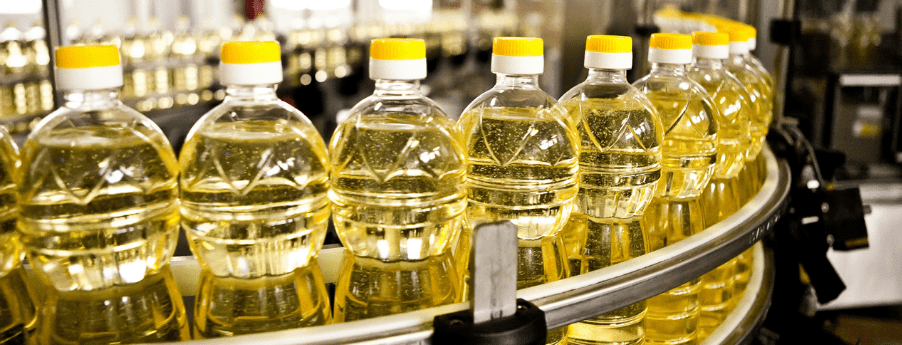Multi Sourced Edible Oil (MSEO) – Health Benefits

The nutritional habits of people have undergone a radical change over the last few years.1 Studies have shown that the food we eat and the day-to-day routine choices we make is directly correlated with various lifestyle diseases.2 Therefore, careful selection of the food consumed and following recommendations set after careful investigations by organizations and governments are critical for our health.
Nutrition consists of three essential macronutrients: carbohydrates, proteins and fats. These three perform key functions in the body.3 Previously, fats have been predominantly known for being high energy sources. Today, they account for being important parts of our physiological and biological body functions. Fats are a part of structural components. They protect organs, insulate the body, and carry fat-soluble vitamins, amongst various other roles in the body. 4
Sources of Fat and Vegetable Oils
Fat can be obtained from poultry, fatty fish, dairy products, nuts, seeds, and edible oils. Vegetable oils are the predominant source of fat in our diet.5 In India, cooking oil forms an integral part of the household and is involved in every dish and hence, is an important contributor to our health. The nutritional quality of an oil has become important enough to investigate, because of the role of fat in many nervous and cardiovascular diseases.
The nutritional quality of an oil depends upon its fatty acids composition, presence of essential fatty acids and natural antioxidants. Fatty acids are the building blocks of fats and oil and are classified based on chain length and amount of desaturation (number of double bonds) – SFAs (Saturated fatty acids) with no double bonds, MUFAs (Monounsaturated Fatty Acid) which have 1 double bond, and PUFAs (Polyunsaturated Fatty Acid) that have greater than or equal to 2 double bonds.6 SFAs have been associated with increasing total and bad cholesterol compared to MUFAs and PUFAs that have been known to reduce cholesterol levels and benefit heart health. Similarly, studies have also shown that replacing SFAs with PUFAs followed by MUFAs lowers bad cholesterol.7, 8, 9
The Need for Multi sourced Edible Oil (MSEO)
Individual fatty acids have their pros and cons. Hence a balanced ratio of SFA: PUFA: MUFA is necessary. Single seed oil may not provide a balanced ratio and therefore, the National Institute of Nutrition (India) recommends rotating edible oils, using a combination of oils.10 Although, rotating oil is recommended, scientifically combining oils to derive maximum functional and nutritional benefits can be a challenge. Based on this, Multi sourced edible oils (MSEO) are customized according to Indian cooking habits, with greater attention to health. MSEO category is governed by two regulatory authorities i.e., FSSAI and AGMARK to bring stringent control on Quality and Safety. Very few other food categories like baby food and packaged water have such multiple regulations.11
MSEO offers enhanced benefits that improve nutritional, physiological and functional health. MSEO focuses on a balanced MUFA: PUFA content, which together with essential fatty acids and natural antioxidants can reduce bad cholesterol and be beneficial against cardiovascular diseases.12 In concurrence to this, a study testing a synergistic blend of rice bran oil (RBO) and safflower oil (SO) (70:30) led to significant reduction in plasma cholesterol, LDL-C and had a positive impact on inflammatory markers in blood. The authors concluded that RBO along with SO magnified hypocholesterolaemia efficacy compared to single oils alone13, 14. Similarly, in 2010, studies have been performed with a blend of RBO:SO (80:20) and showed significant antihyperlipidemic effects. 15,16 Moreover, a blend of rice bran oil and sesame oil in an 80:20 blend yielded beneficial effects by improving lipid profiles as well as glycaemic control significantly in diabetic patients and pre-diabetic subjects17. A blend of rice bran oil with olive oil in 70:30 ratio showed lipid lowering properties18. Hence, multisource edible oils are targeted to achieve beneficial functional and nutritional properties for holistic nourishment, health, and well-being.
References:
- K., & Giddiah. R. Societal Changes And Its Impact On Food Habits, INTERNATIONAL JOURNAL OF SCIENTIFIC & TECHNOLOGY, FEBRUARY 2020, RESEARCH VOLUME 9, ISSUE 02, ISSN 2277-8616
- Farhud DD. Impact of Lifestyle on Health. Iran J Public Health. 2015 Nov;44(11):1442-4. PMID: 26744700; PMCID: PMC4703222.
- Kumar, V., Shukla, A., Sharma, P., Choudhury, B., Singh, P., & Kumar, S. (2017). ROLE OF MACRONUTRIENT IN HEALTH. World Journal of Pharmaceutical research. 373 – 381. 10.20959/wjpr20173-7955.
- European Food Information Council- Functions of fat in the body
- Lyndsey D. Ruiz, BS, DTR Sheri-Zidenberg-Cherr, PhD Center for Nutrition in Schools Department of Nutrition University of California, Davis May 2016
- FAO, Fats and Fatty acids in Human Nutrition. ISSN 0254-4725
- Katherine M. Livingstone, 6 – Authorised EU health claim for MUFA and PUFA in replacement of saturated fats, Editor(s): Michele J. Sadler, In Woodhead Publishing Series in Food Science, Technology and Nutrition, Foods, Nutrients and Food Ingredients with Authorised EU Health Claims, Woodhead Publishing, 2018, Pages 87-100, ISBN 9780081009222, https://doi.org/10.1016/B978-0-08-100922-2.00006-1.
- Book: Healthful Lipids, Oi Ming Lai- Department of Biopress Technology, Malaysia
- Weech M, Altowaijri H, Mayneris-Perxachs J, Vafeiadou K, Madden J, Todd S, Jackson KG, Lovegrove JA, Yaqoob P. Replacement of dietary saturated fat with unsaturated fats increases numbers of circulating endothelial progenitor cells and decreases numbers of microparticles: findings from the randomized, controlled Dietary Intervention and VAScular function (DIVAS) study. Am J Clin Nutr. 2018 Jun 1;107(6):876-882. doi: 10.1093/ajcn/nqy018. PMID: 29741564.
- Dietary Guidelines for Indians- ICMR-NIN
- FSSAI- Compendium- Food Regulations
- Hashempour-Baltork, F., Torbati, M., Azadmard-Damirchi, S., & Savage,G. Vegetable oil blending: A review of physicochemical, nutritional and health effects, Trends in Food Science & Technology, (2016), Volume 57, Part A, Pages 52-58, ISSN 0924-2244,
https://doi.org/10.1016/j.tifs.2016.09.007.
- Sugano, M., & Tsuji, E. Rice Bran Oil and Cholesterol Metabolism, The Journal of Nutrition, Volume 127, Issue 3, March 1997, Pages 521S–524S,
- Upadya H, Devaraju CJ, Joshi SR. Anti-inflammatory properties of blended edible oil with synergistic antioxidants. Indian J Endocrinol Metab. 2015 Jul-Aug;19(4):511-9. doi: 10.4103/2230-8210.159063. PMID: 26180768; PMCID: PMC4481659.
- Malve H, Kerkar P, Mishra N, Loke S, Rege NN, Marwaha-Jaspal A, Jainani KJ. LDL-cholesterol lowering activity of a blend of rice bran oil and safflower oil (8:2) in patients with hyperlipidaemia: a proof of concept, double blind, controlled, randomised parallel group study. J Indian Med Assoc. 2010 Nov;108(11):785-8. PMID: 21510583.
- Kennedy, & Menon, Savita & Epuru, Suneetha. (2010). Study on effect of Rice bran and sunflower oil blend on human lipid profile. Indian Journal of Applied and Pure Biology. 25. 375-384.
- Hota, Srinivasan, D., Sahoo, A., Behera, J., Patro, K., Bandyopadhyay, B., Sehgal, D., & Rajesh. (2020). Possible Anti-Diabetic and Anti-Hyperlipidemic Efficacy of Blended Rice Bran Oil with Sesame Oil in Comparison with Soybean Oil: A Clinical Investigation in Pre-Diabetic and Diabetic Individuals. 10.35248/2167-0870.20.10.419.
- Choudhary, M., Grover, K., & Sangha, J. (2013). Effect of Blended Rice Bran and Olive Oil on Cardiovascular Risk Factors in Hyperlipidemic Patients. Food and Nutrition Sciences. 04. 1084-1093. 10.4236/fns.2013.411141.
Related
Top 25 Investment Options for Kids in India: A Complete Guide
Planning for the financial security and future needs of children is a vital component of parental responsibility. In India, there exists a plethora...
Job Loss Insurance Cover in India: An In-depth Exploration
In the dynamic landscape of India's job market, uncertainties loom large, with factors like economic fluctuations, technological advancements, and...
Supply Chain Finance (SCF) by Banks in India
In the intricate realm of business operations, Supply Chain Finance (SCF) has emerged as a pivotal financial instrument, fostering collaboration,...


